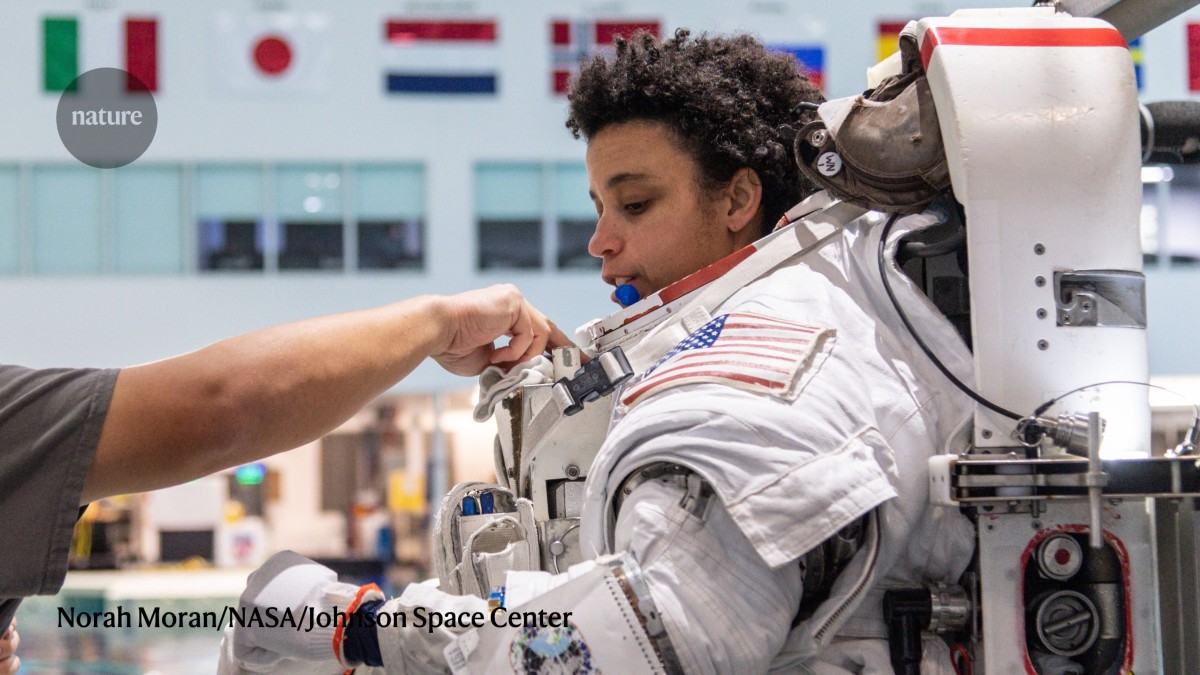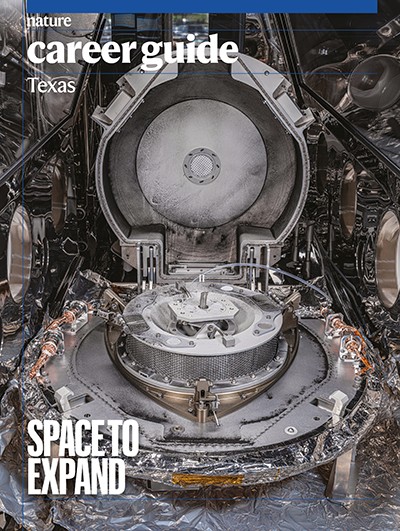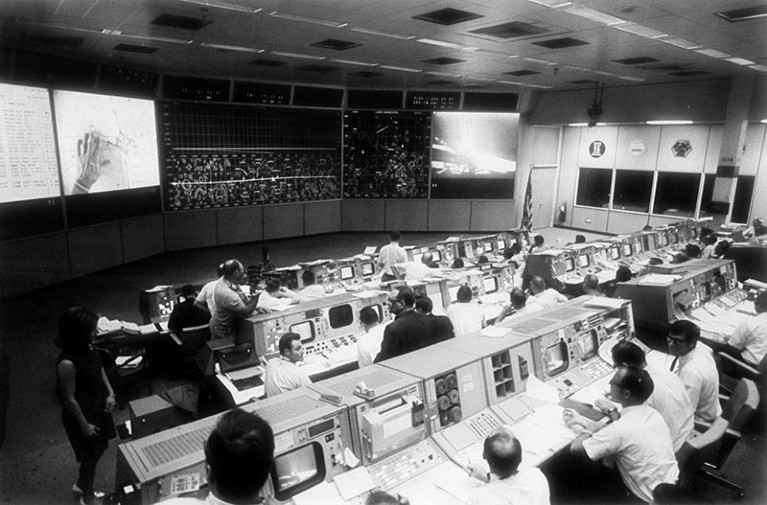
The mission control room in Houston, Texas, after Apollo 11 touched landed on the Moon in 1969 carrying Buzz Aldrin and Neil Armstrong.Credit: NASA
Some 650 million people around the world watched with bated breath as Neil Armstrong and Buzz Aldrin touched down on the Moon in 1969. With just seconds of fuel remaining, the success of the nail-biting Apollo 11 landing was sealed with a single line uttered by Armstrong: “Houston, Tranquility Base here,” he radioed back to mission command’s base in Texas. “The Eagle has landed.”
That immortal moment highlights the ever-present role that Texas has had in space flight. “Everyone recognizes Texas as a space leader,” says Mitrah Avini, a policy adviser for the Dallas-based non-profit organization Texas 2036.
And the state’s space sector is rapidly expanding. The World Economic Forum predicts that the global space economy will grow from US$630 billion in 2023 to $1.8 trillion in 2035, driven by rising commercial investment and demand for space-based services, and Texas wants a part of that action. Today, the state hosts more than 10% of the US aerospace workforce, around 200,000 workers, behind only California and Washington.
“The Texas legislature has invested a significant amount of money into the space industry,” says Kyle DeMars, an aerospace engineer at Texas A&M University in College Station. “If I were a student looking to break into the space industry, I would follow the innovation, and Texas is where that is.”
Stellar prospects
Already, 18 of the 20 largest aerospace manufacturing companies in the United States operate in Texas, and the state has seen a proliferation of smaller start-up firms. Drawn by the allure of large parcels of land for building facilities, and by proximity to renowned institutions such as NASA’s Johnson Space Center (JSC) in Houston, more than 500 space-sector companies have set up shop in Texas since 2019, taking the state’s total to around 2,000.
Nature Career Guide: Texas
In July 2024, Elon Musk, chief executive of SpaceX, said the company would shift its headquarters from Hawthorne, California, to Starbase, a purpose-built facility in Boca Chica, on the Gulf Coast of South Texas. The most valuable space company in the world, SpaceX has been using the facility to develop and launch its Starship rocket, designed to take humans to the Moon and eventually Mars. Musk cited ideological differences with California’s state governor as the reason behind the relocation.
Texas’s tax advantages also make it an attractive destination for high earners and big businesses. Currently, Texas has no state income tax, and it imposes a relatively low corporate levy through its ‘franchise tax’ — which, for most companies, is 0.75% of their revenue. California, by contrast, has a state income-tax rate of 13.3% on its highest earners, and an 8.84% profit-based corporate tax levy.
Further sweetening the deal, the Texas House of Representatives approved a bill in May that exempts from franchise tax all businesses operating spaceports used by the US Department of Defense. State Representative Stan Gerdes said the measure was expected to attract more business and talent to the state. However, companies will still have to pay Texas property taxes, which are some of the highest in the country.
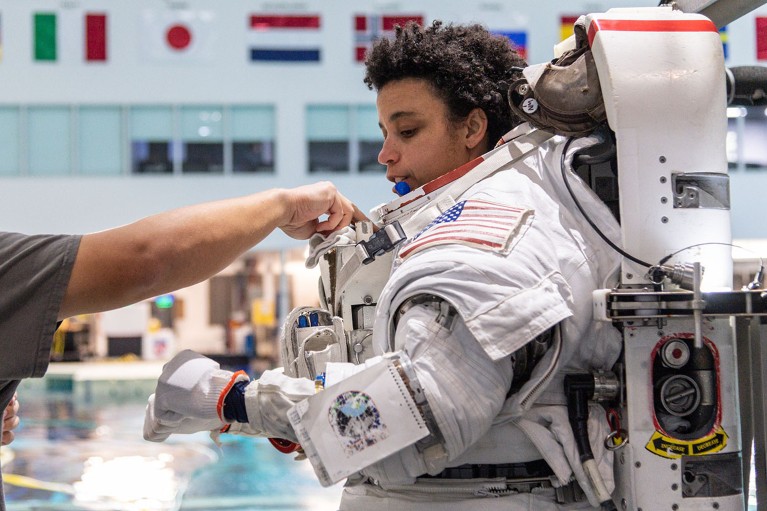
NASA astronaut Jessica Watkins trains for a spacewalk at the Johnson Space Center in Houston.Credit: Norah Moran/NASA/Johnson Space Center
Attracting companies such as SpaceX creates an incentive for other firms to move there, says Avini. “When you have leaders in a particular industry located in the state, it gives the impression it is a hub of activity,” she says. “It attracts interest from start-ups and others.”
Texan companies also benefit from NASA’s strong presence in the state, which opens opportunities for commercial partnerships and access to federal contracts. In 2023, NASA awarded 10% of its procurement contracts, worth around $2.3 billion, to businesses that operate in Texas: $53million went to Boeing, and $18.9 million to KBR Wyle Services in Houston; the agency also supported 2,997 federal employees and 17,359 Texan-based contractors.
Here’s how to break into the Texas space industry
Like many government agencies, however, NASA faces deep cuts to its funding, especially to its scientific-research arm. In May, the White House released a budget proposal that would have cut NASA’s overall funding by 24%. Two months later, on 10 July, the US Senate Appropriations Committee approved a bill to maintain current levels of NASA funding, rejecting the proposed cuts. The bill, which will shape NASA’s 2026 spending allocations, will now move to the full Senate and the House of Representatives for consideration, and is due to be finalized later this year.
Yet parts of NASA have found a reprieve with the release of the federal government’s ‘Big, Beautiful Bill’, a budget reconciliation bill signed into law by President Donald Trump on 4 July. The space agency is set to receive $10 billion in funding over the next six years from the bill, which includes allocations for the Moon-exploration programme Artemis and around $300 million for upgrades to the JSC.
Casey Dreier, chief of space policy at the Planetary Society, a space advocacy organization based in Pasadena, California, says that Trump’s NASA budget proposal would have phased out key Artemis components, including the Space Launch System, the Orion crewed spacecraft and the Gateway space station. This would have had “significant impacts” for Texas — as would cutting staff numbers by “upwards of 20%” at the JSC. “However, the recent ‘Big, Beautiful Bill’ countermanded that proposal and provided billions of additional dollars to those projects, in addition to hundreds of millions of dollars for infrastructure and construction at the JSC.”
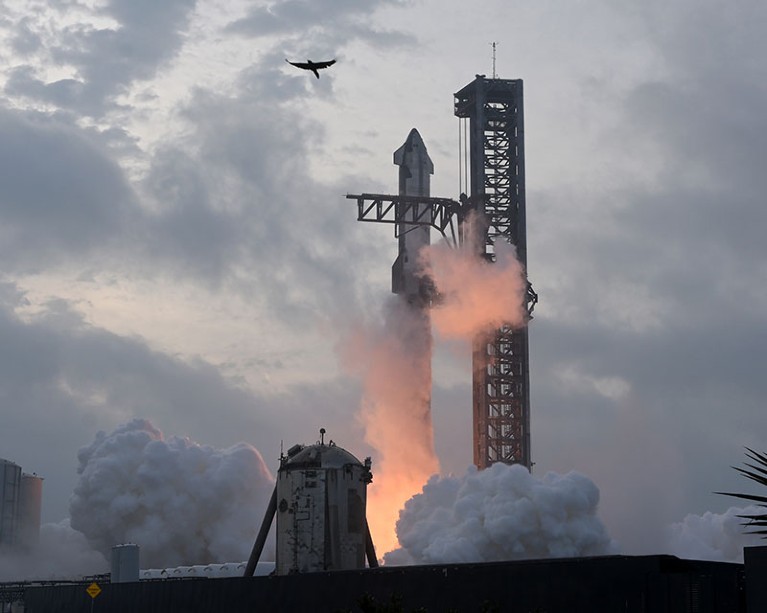
SpaceX launches Starship in Texas in 2024.Credit: Joe Marino/UPI/Shutterstock
In the commercial sector, a shift in funding would probably favour big industry players while disadvantaging others, says Dreier. “Generally, the commercial space industry retains a lot of support in the White House proposal. But it’s important to note that the commercial industry does not provide services for free: NASA is their customer, so any reductions in spending could impact businesses in the private sector as well.”
When it comes to the country’s proposed exploration of the Moon and Mars, Dreier says that a few firms — such as SpaceX, or Blue Origin in Kent, Washington — could theoretically deliver cargo and crew to these target destinations. But the capabilities don’t yet exist, he adds, and would be a gamble to develop without long-term government support.
New offerings
Despite cuts to the public sector, the growth of the overall space sector in Texas is “exponential” at the moment, says Clint Dawson, chair of the Department of Aerospace Engineering and Engineering Mechanics at the University of Texas at Austin. This has had a knock-on effect for academia.
“We’ve seen tremendous growth in applications to aerospace programmes,” he says. “Last year we got about 2,000 applicants for roughly 200 freshman slots,” signalling a shift in student priorities from previous years. “This year it’s closer to 3,000 applicants.”
This increase in demand prompted Texas governor Greg Abbott to call last March for more universities in the state to offer space-engineering programmes. Texas A&M obliged: it now offers “a very specific space-engineering degree programme at both undergraduate and graduate levels”, says former astronaut Nancy Currie-Gregg, an engineer at Texas A&M who is also on the board of directors for the Texas Space Commission. “We expect the first students will start in 2026.” The new programme will focus on the growing space industry in Texas, and will include an Introduction to Space course covering orbital mechanics and environmental control systems.
“There are plenty of degree programmes, including here at Texas A&M, that focus on things like propulsion and hypersonics — the things that get you to and from space — and even on the space environment, but this would be one of the first undergraduate degrees that focuses on the multidisciplinary engineering nature of what happens once you get there,” says Demars.
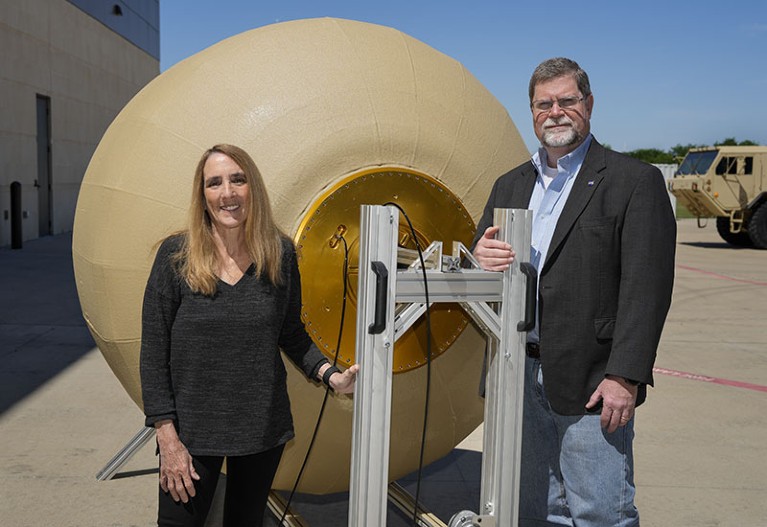
Texas A&M Space Institute director Nancy Currie-Gregg with deputy director Robert Ambrose.Credit: Yi-Chin Lee/Houston Chronicle via Getty
Currie-Gregg adds that demand is already high for courses such as this. “Every seat is filled” in her space-engineering courses, she says. “I have 100 students this semester, and not everybody could get into the class that wanted to.”
2025-08-27 16:25:00
